We’re a threesome again!
The Vega Zeta is a 10,000 ton container ship built in 2006 and registered in Liberia. It has probably carried a lot of valuable cargo in the past but none more so than it’s recent voyage from Panama with the mighty Tramp onboard. But nothing is as it seems and in Colombia everything is much slower and more complicated than it needs to be. And so it was for us in Cartagena trying to release Tramp from his Colombian jail and why we ended up spending an extra week without him.
The details are not for the feint of heart but the summary of the story is that we dropped Tramp off at the Panama port on a Wednesday with the full understanding and expectation that it would be loaded on the Vega Zeta soon after, set sail on the Saturday and arrive in Cartagena Colombia on Sunday. Very straightforward. On that basis we flew to Cartagena the next day, Thursday, and enjoyed a fabulous few days in Cartagena.
On Monday the ship’s office told us it would be the next day, Tuesday and we would definitely be able to drive away on Wednesday. But the next day we learn that the ship is still in Cuba, not Panama or Colombia, and has mechanical problems. In fact, we’re told, the ship won’t arrive until the following Saturday.
The lack of transparency and borderline dishonesty of the shipping company meant that our group of overlanders with vehicles on this ship – and there were about 20 of us who had bonded together during this process – were without our transport, home and personal belongings. On top of this, our living costs in hotels and restaurants were huge and we were losing valuable time.

Who wants to be a millionaire? I’ve got two million Colombian Pesos to pay all the port and processing fees so we can reclaim Tramp
It took two agonising days for us to get Tramp released from the port authorities and I can only summarise them as being extremely frustrating given the excessive bureaucracy, staff indifference, misinformation, outrageous costs and unbelievable inefficiencies of the process. If I told you the number of forms I filled in, the stamps I got, the different buildings I went to, the queues I stood in, the hours of waiting for someone to do something trivial and the money I paid – all in Spanish – you would simply think I was making it up.

My first look at Tramp, still tied down on his flat rack, looking very dirty and salty but otherwise in good condition
Amongst many sad/pathetic/funny examples of Colombian inefficiencies one episode stood out. Near the end of the ordeal we got caught up in an inter-departmental squabble – played out in front of us between two shouting employees on the port tarmac – about proper procedures and paperwork before we could go to the next step. The port guy with the hard hat and hiviz vest clearly was not happy. It got a little tense and also a little hilarious, if you know what I mean.
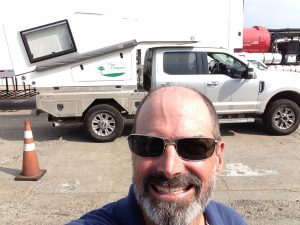
It was such a relief to be able to examine the condition of our truck, camper and all our belongings and find no damage or losses at all
But eventually Tramp was released from his purgatory and I drove off to pick up Julie, who was patiently waiting at our hostel, and because of the time of afternoon and the need to buy insurance the next day we settled into one last night in Cartagena. It was a bittersweet night because we’ve really enjoyed our time in this city but we never wanted or expected to stay two weeks here and we were desperately behind schedule.
Our next major target promised to be one of the big highlights of the trip – the Galapagos Islands. The Galapagos Islands are part of Ecuador and the only way to fly there is from the capital Quito or another major city Guayaquil. Julie was desperately researching a suitable cruise around the Galapagos that was available and would suit our timeline and our budget.
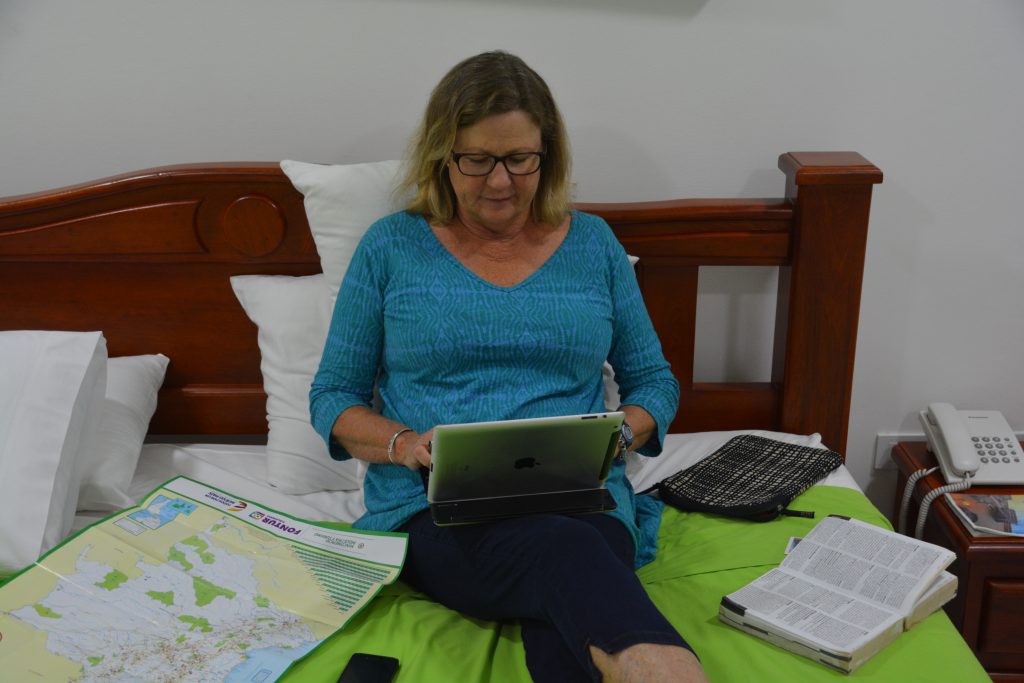
Julie used our extra time in Cartagena to do all the researching about Galapagos and plan our next big adventure
As it turns out, there are many ships of different standards and many different itineraries around different parts of the Galapagos – it’s actually quite complicated when you are doing it within our limits. Julie found one that more or less met our requirements but it meant we had to be in Quito Ecuador in nine days’ time.
With the help of a couple of apps we did the maths and figured we could get there in time – only just – if we got a wiggle on. We were on a mission and a tight timeline and we had many known and unknown factors that would pull us in different directions.
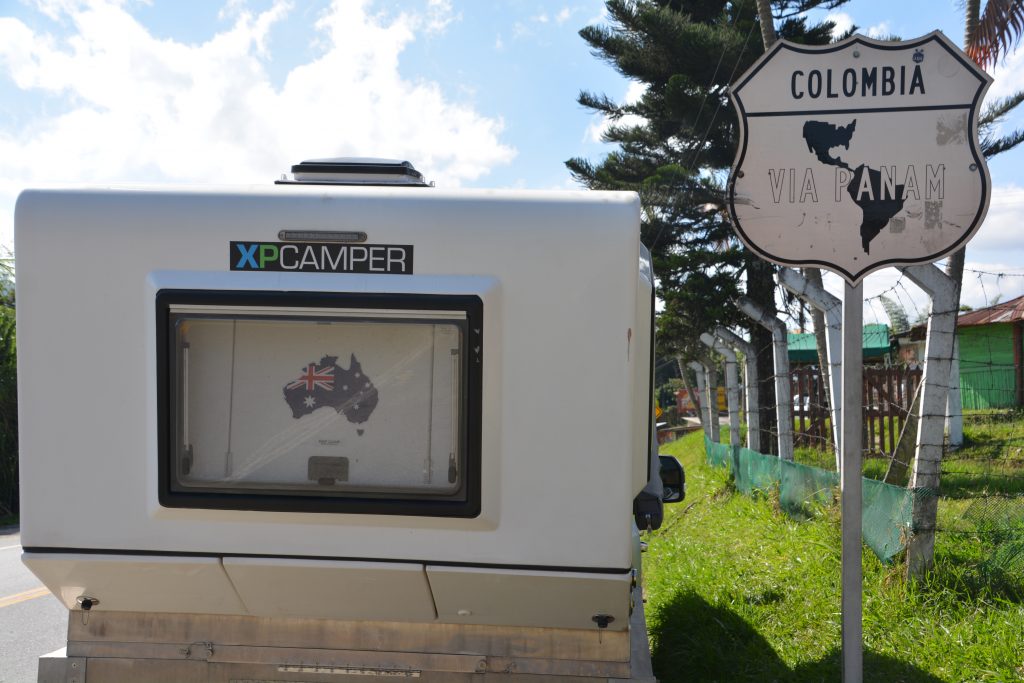
Our path for the next couple of months – the Pan American Highway which should take us all the way to the tip of South America
The first day’s drive south from Cartagena was varied in many ways – the scenery was mostly rolling hills that were bone dry from the long dry season, the towns and villages busy with activity but not particularly prosperous, and the roads ranged from four lane divided highways (nice!) to rough broken bitumen, many long hilly sections that were covered in tight winding bends and an endless stream of large transport trucks that couldn’t move much more than 60km per hour.
Progress was slow and frustrating but we kept telling ourselves this is the new normal and South America is exponentially bigger than Central America so we had a lot of work ahead of us. Still, it was fun to see the countryside, the small towns and villages, the roadside stalls, the people going about their business, all very colourful and entertaining. But those damn trucks!

Trucks were the bane of our lives on the winding roads but they did occasionally provide a little entertainment
Best of all we were reunited with Tramp. He was covered in dried salt water but hummed through the day, passing the trucks when I gave him half a chance, relishing the moment after being tied up and covered in salt water for so long. We camped that night under some trees at the back of a large truck stop area, one of our specialties, and enjoyed an evening getting back into our favourite routine. Absolute bliss!
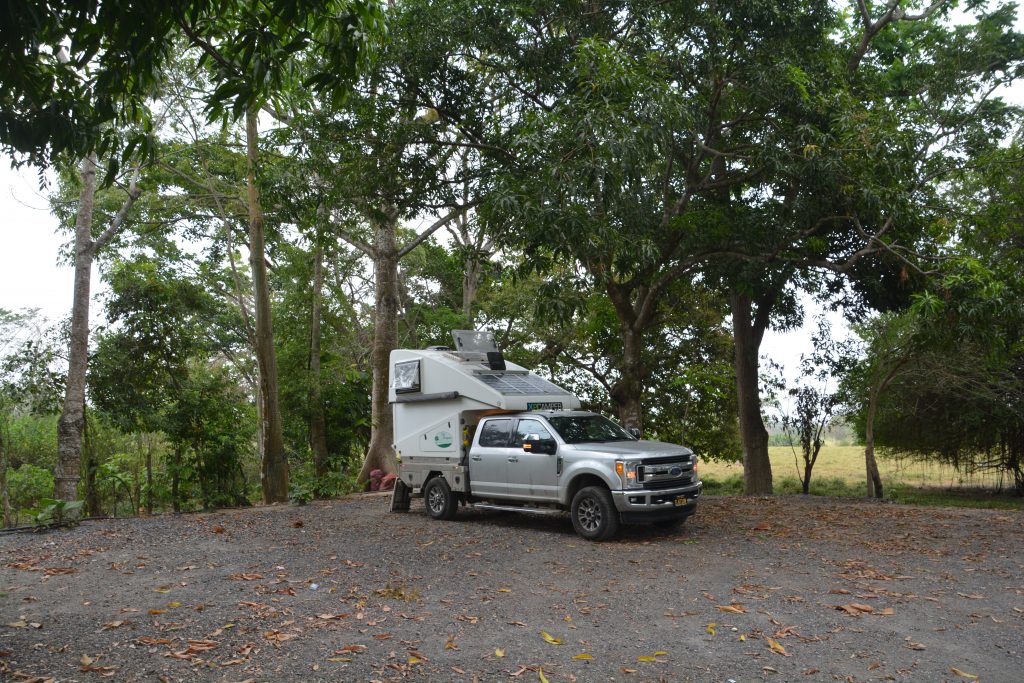
Probably our best truck stop camping spot, back in a corner under the trees with only the neighbourly cows to bother us
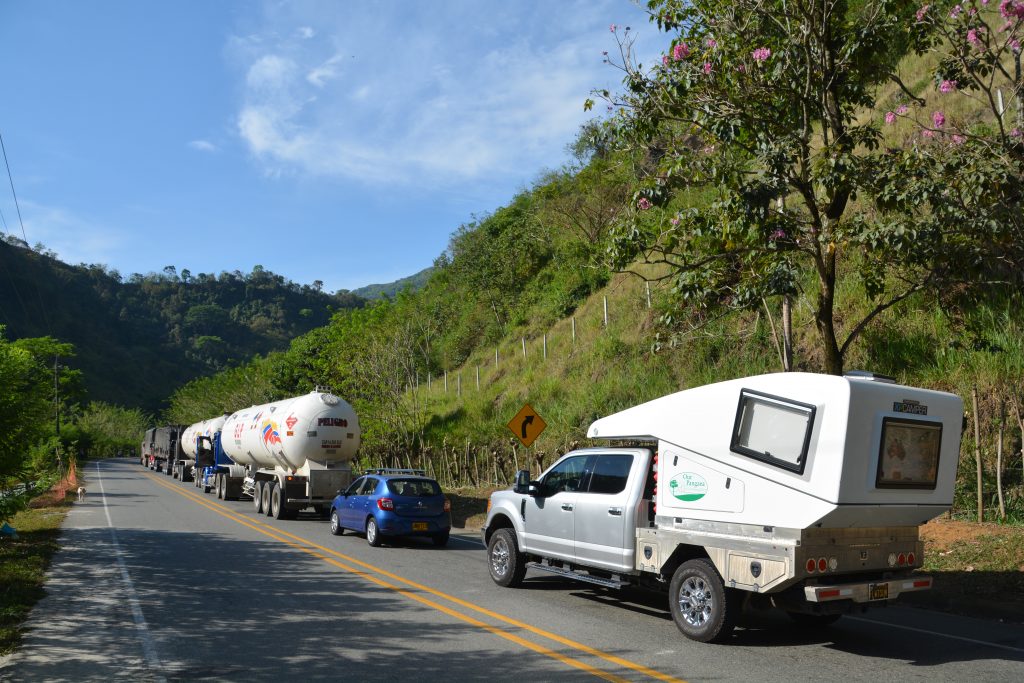
If it wasn’t the trucks it was the long stops for road construction, just a fact of life in Colombia
Yes, the unknown factors when driving in a foreign country. We headed off early the next day with plans of heading south, pushing through the huge city of Medellin, infamous as the centre for all the drug cartels many years ago, and getting some serious miles behind us. We started well and even took the time to have three entrepreneurial kids wash Tramp from water pumped out of the huge Rio Calca. Tramp sparkled in the sunshine afterwards and most importantly had all that salt water and grime washed off him.
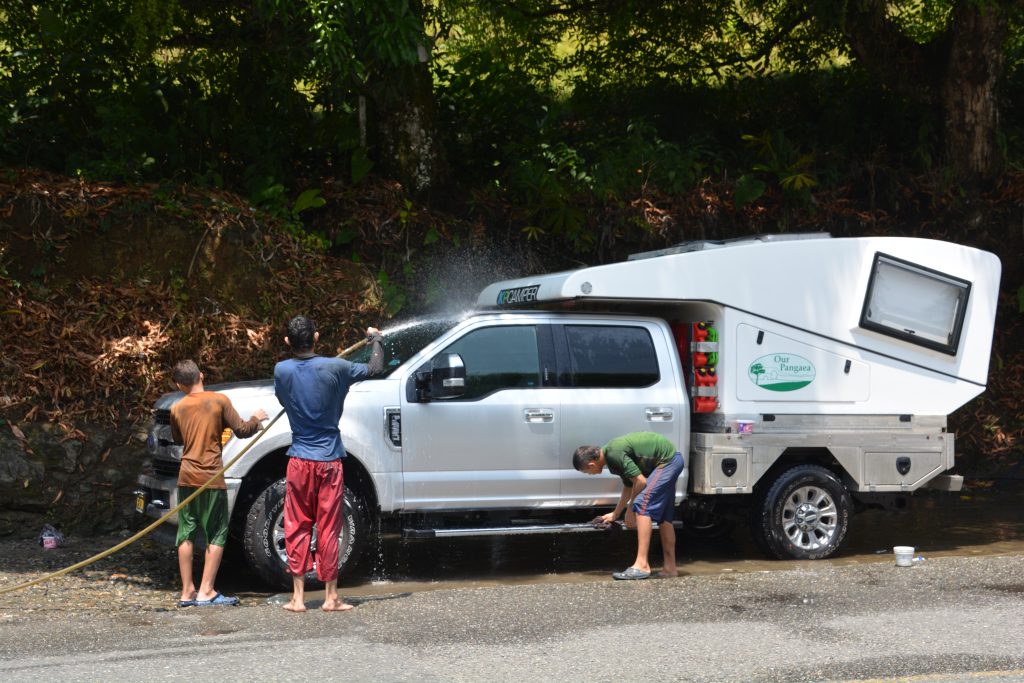
For a couple of bucks we had these three kids wash Tramp until he sparkled in the Colombian sunshine
Then the road climbed up, seriously up, a tight and narrow winding road clogged with trucks but surrounded by stunning views of the deep valleys, green mountainsides and little villages clinging to the side of the road. But the trucks were killer slow and opportunities to pass were few and far between. Some passing manoeuvres on these tight roads were a bit dicey but that’s what it took to make any progress at all.
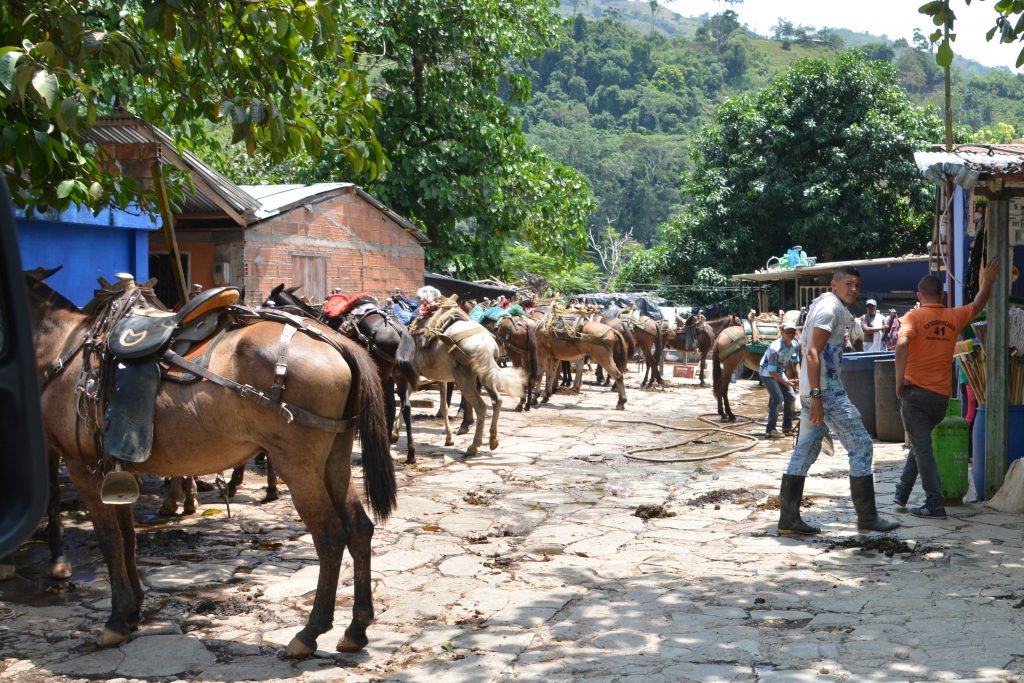
In a small village in the mountains there appeared to be a town meeting with all the locals riding in for the big event
The mountains were glorious, steep velvet green slopes in all directions, dairy ranches with the quintessential black and white dairy cows scattered on the hills, rivers running far below. But the mountains were big and continuous – to provide a point of reference, we finally tipped out at the highest point at 2,780 metres or 8,600 feet. That is 550 metres higher than Mt. Kosciusko in Australia or 1,400 feet higher than, say, Donner Pass in northern California.
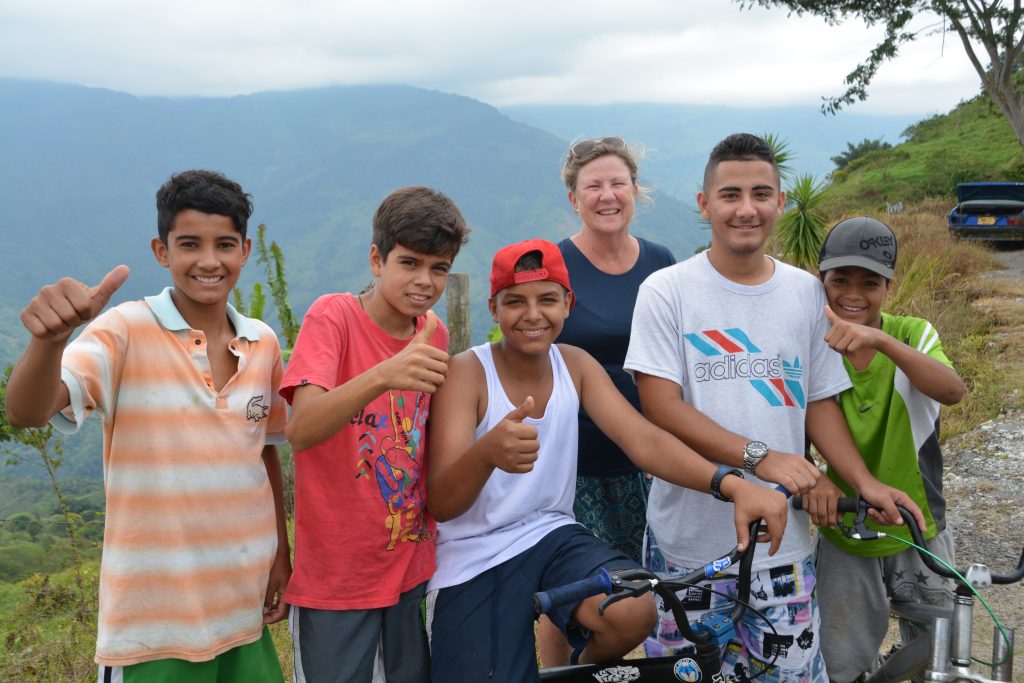
Near the top of one of these mountains we stopped for lunch and were visited by these bright young guys who were curious, a little shy (at first) and asked a lot of questions
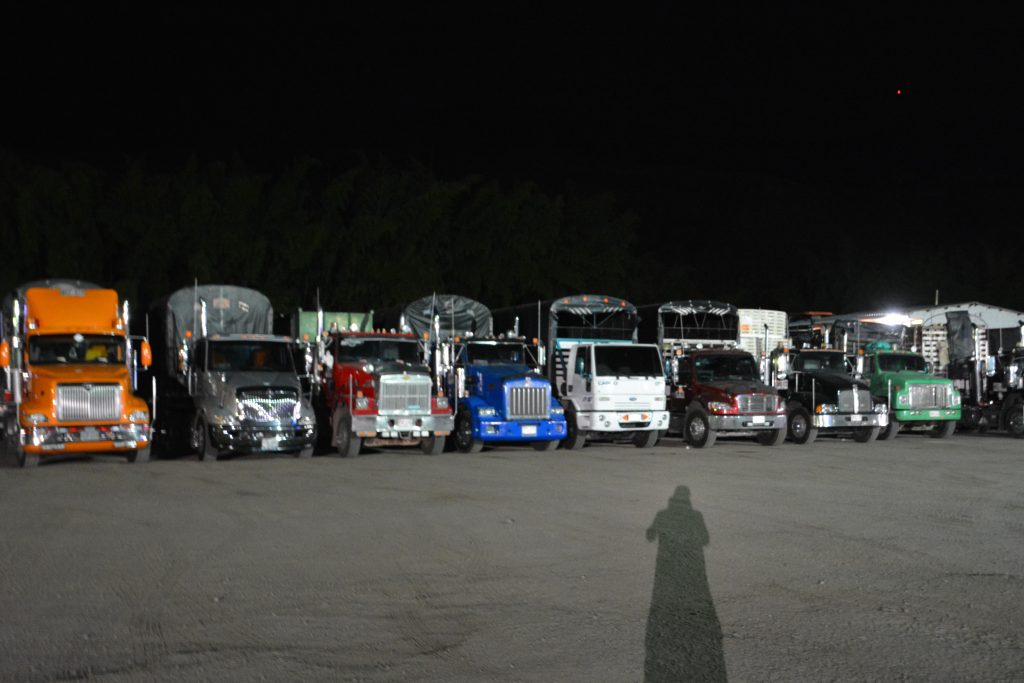
We camped most nights at truck stops – here’s an early shot of trucks lined up for the night. Many more arrived during the night and they all left in the morning before we did.
Medellin is a city of over two million people, most of them living in high rise buildings made of the same pink/red brick clinging to the steep mountains on either side of the river. It seemed Medellin was squeezed into a narrow gap of the mountains and then overflowed up the steep mountainsides. At one stage we even saw a gondola running up and over the suburbs to the top to help the locals get to and from work. This city would only work in a place where nobody owned vehicles because there would be no room for wide roads or places to park for those multitudes living on the steep hillsides.
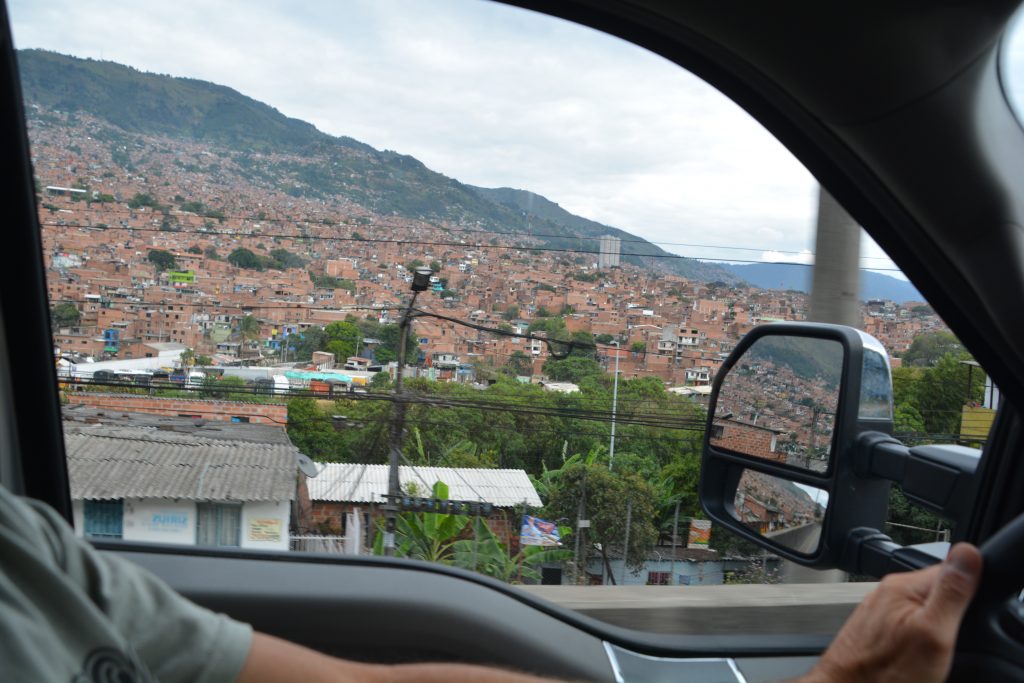
My side window view of the city of Medellin, all the same colour as it climbs up the steep slopes of the mountains
Then it was up and over another huge mountain range, more super tight narrow winding roads, a conga line of huge trucks, stunning views of the mountains and dusk setting in. At one stage we were stopped at a military check point – always more fun because of the machine guns – and were told “Obtener de la coche” – get out of the car. Not a good sign at any time but it turns out it was just a curiosity stop – they were interested in Tramp and our travels, very friendly, while the perfunctory search lasted 30 seconds. It had been a long slow day by the time we reached flat ground and pulled into the first truck stop for camp.
We drove for just over 11 hours this day and covered 254 miles (406 km). Just for fun we kept track of the miles we drove each hour to show how slow the driving was. Here’s the list:
Hour 1 – 32 miles (51km) – early start, clear roads
Hour 2 – 16 miles (26 km) – stop at roadside stall to buy mangos, stop for roadside car wash
Hour 3 – 35 miles (56 km) – lots of trucks, along Rio Calca River, stop for fuel, start of hills
Hour 4 – 12 miles (19 km) – slow winding steep road, steady stream of trucks
Hour 5 – 18 miles (29 km) – made top of ridge at 2780 metres (8,600 feet), quick lunch stop
Hour 6 – 21 miles (34 km) – followed high altitude ridge, couple of short photo stops
Hour 7 – 29 miles (46 km) – thru many small crowded villages and crazy tight roads
Hour 8 – 25 miles (40 km) – down mountain behind trucks, great views
Hour 9 – 33 miles (53 km) – great run through Medellin on divided road, quick stop for fruit/veggies
Hour 10 – 12 miles (19 km) – killer slow behind huge trucks up narrow winding mountain road
Hour 11 – 21 miles (34 km) – getting dark, down mountain behind trucks
Hour 12 – arrive at bottom of hill, pull into first truck stop, beers, showers, a long beautiful drive but on a very tough day with over 11 hours of driving we covered only 254 miles or 406 km.
We now have a much better idea of how travelling through the mountains of South America will be, spectacular scenery but agonisingly slow. At least the threesome is back together and on the road again!
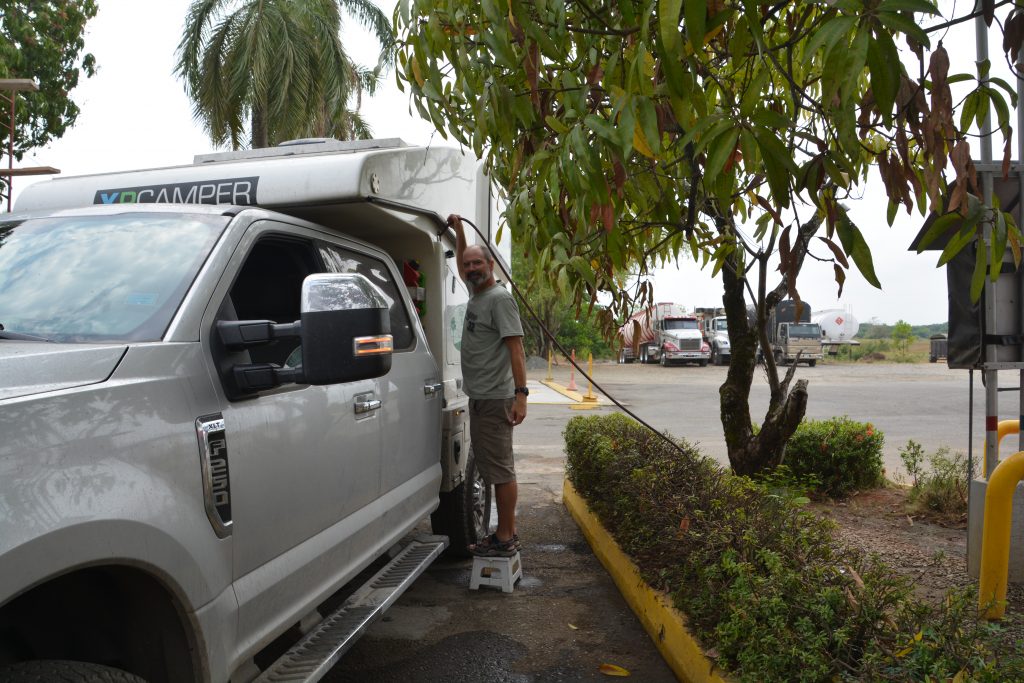
Tramp carries about 27 gallons – 100 litres – of water for us to use in the camper but filling it with usable water is always a challenge


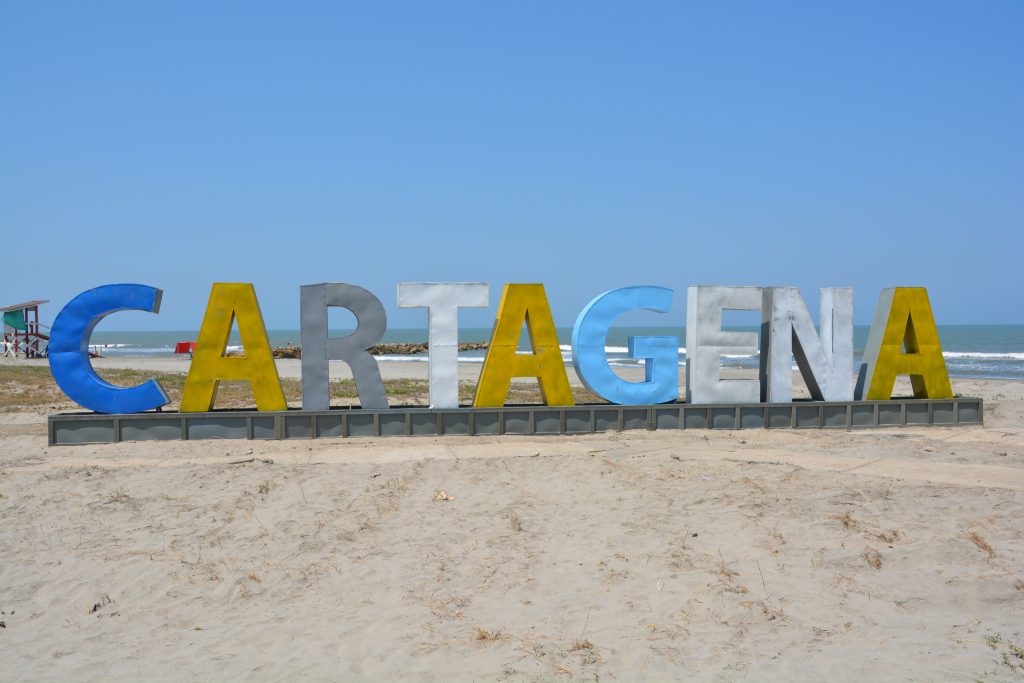







Comments
We’re a threesome again! — No Comments
HTML tags allowed in your comment: <a href="" title=""> <abbr title=""> <acronym title=""> <b> <blockquote cite=""> <cite> <code> <del datetime=""> <em> <i> <q cite=""> <s> <strike> <strong>